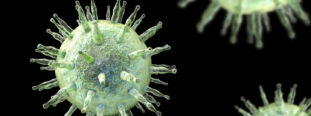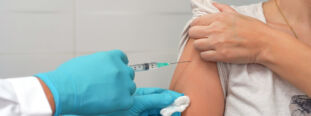AAN 2014 – New MS treatment studies: Part II
To continue our coverage of the 2014 annual meeting of the American Academy of Neurology, the following are some of the treatment studies that were presented.
To see Part I of this report, click here.
Aubagio (teriflunomide): An analysis of two phase III studies (TEMSO and TOWER) found that Aubagio starts to have an effect early on – within 6 weeks or so after starting treatment (Wolinsky and colleagues. AAN 2014; abstract P7.214).
A long-term analysis (up to nine years) of the safety of the drug found that side effects were most common in the first six months of treatment (Freedman and colleagues. AAN 2014; abstract P3.150). However, it’s important to note that most people (57%) dropped out of the study at some point and the ones who remained may have been those who were responding particularly well to the drug.
An unusual issue with Aubagio is that men with MS should use condoms since animal studies have shown that the drug can be found in sperm. This is a precaution because the effects of Aubagio on a developing fetus aren’t known. (Men should stop treatment and actively remove the drug from their systems if they’re planning to father a child.) A new study in animals reports that there’s no evidence that Aubagio affects fertility, damages sperm or is toxic to a developing fetus (Davenport and colleagues. AAN 2014; abstract P2.233). But condoms are still advised until more is known.
Tecfidera (dimethyl fumarate): The ENDORSE study, the long-term follow-up of the two phase III trials of Tecfidera (called DEFINE and CONFIRM), showed that the medication continues to be effective over the first four years of therapy (Gold and colleagues. AAN 2014; abstract P3.173). With the 240 mg twice-daily dose, the relapse rate went from 0.20 after two years to 0.14 at four years.
An emerging concept in MS research is the measurement of “no evidence of disease activity” (NEDA, aka “disease activity-free”). This means that a person has no relapses, no new inflammatory activity on their MRI, and no worsening disability. With Tecfidera 240 mg twice-daily, 34% had NEDA after one year (vs. 18% on placebo), and 23% had NEDA after two years (vs. 11% on placebo) of treatment (Havrdova and colleagues. AAN 2014; abstract P3.159). On this measure of effectiveness, Tecfidera’s numbers are less impressive than what has been reported with some of the other MS medications, such as Tysabri, Gilenya and Lemtrada. With these medications, about one-third of people can reportedly achieve NEDA at two years (Havrdova et al. Lancet Neurol 2009; Kappos and colleagues. AAN 2011; Cohen and colleagues. Lancet 2012. 7Coles and colleagues. Lancet 2012.Hartung et al. AAN 2013).
One consideration with Tecfidera is side effects such as flushing and stomach problems, which are very common in the first few months. About 1 in 4 people switched to Tecfidera stopped treatment, according to the results of the ENDORSE study. In years 2-4 of treatment, only 4-6% stopped because of side effects (Phillips and colleagues. AAN 2014; abstract P2.200). However, that was in a clinical trial and real-life results may differ. The Cleveland Clinic looked at the records of 280 people who started treatment with Tecfidera, and found that about 16% stopped taking the drug after a month or so, in most cases because of side effects (Cohn and colleagues. AAN 2014; abstract P2.214). Overall, over 40% of people experienced flushing and/or stomach problems.
Exercise: A study in Germany compared the effects of regular walking to no exercise to see if there were any improvements in walking ability (Schmidt and colleagues. AAN 2014; abstract P3.056). All of the participants had mild walking disability (EDSS score 3.5 or lower). Regular aerobic walking was associated with a number of benefits, such as longer step length, longer foot-contact time and less effort, all measures of a more stable gait and improved walking ability.
Worms: One of the odder treatments proposed for MS is worm therapy (see Using worms to treat MS, MSology, January 31, 2013). The theory is that a parasitic infection can shift the immune response to a less inflammatory profile, much as Copaxone is purported to do. In the HINT 2 trial, 15 people with MS received pig whipworm eggs every two weeks for 10 months (Fleming and colleagues. AAN 2014; abstract P3.149). Treatment was associated with a modest reduction in new inflammatory lesions seen on MRI, but the effects fell far short of what can be achieved with more mainstream therapies.
Magnet therapy: Some studies have suggested that stimulating the brain with magnets can help relieve depression (Jin & Phillips. BMC Psychiatry 2014; epublished January 18, 2014). New technology allows magnets placed outside the head to stimulate deeper brain structures. So that technique has now been tried in people with MS (Schippling and colleagues. AAN 2014; abstract I7-2.004). A total of 18 people with MS underwent 18 magnet therapy sessions over a 6-week period. Stimulating the prefrontal cortex appeared to have no effect. But stimulating the motor cortex did seem to relieve depression and had a modest effect on MS fatigue. So this novel approach may have some potential, but additional studies will be needed.
Share this article
Facebook Twitter pin it! Email
Related Posts
Back





